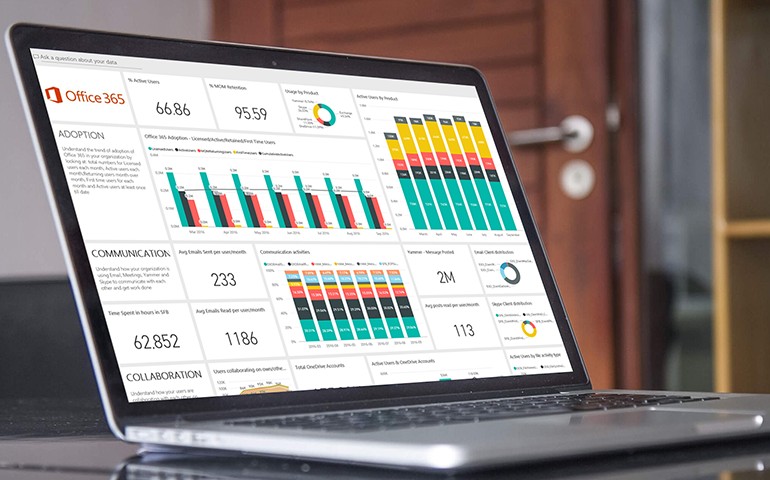Microsoft recently released an update for one of its most noteworthy products – Office 365.
The update is called Office 365 adoption content pack in Power BI and was announced on May 22nd, 2017. The Power BI dashboard within the content pack displays detailed insights about usage, which is divided into four main areas – adoption, communication, collaboration, and activation.
This adoption pack enhances the existing usage reports that offer insights for various flagship applications available in Office 365, such as Skype for Business, OneDrive, Exchange, SharePoint, and Yammer. Enabling the Power BI content pack you can collect data and drill down to gain valuable information about Office 365’s usage in the organization. With the help of these insights, the admin will be able to perform more targeted user training and communication. Power BI also has sharing capabilities using which the dashboard reports can be easily shared with business stakeholders or the leadership team for better decision making.
User analytics
Measure adoption of the key tools by getting a detailed report of active users, enabled users, first-time users and returning users, and more. Also, you can visualize the complete usage of the individual tools within the Office 365 platform across your organization.
Collaboration analytics
You can gain a better understanding of how end users are collaborating and communicating, and which tools like SharePoint and OneDrive they are making use of. Also, get reports on how many employees share documents internally or externally and how many OneDrive accounts and SharePoint sites are used actively.
Analytics based on product
You can check how end-users access, activate and use Office 365 products through the Power BI dashboard.
- Get to see Yammer activity and active users by articles posted, read andliked.
- Check SharePoint Online activity by top departments, users, top activities, as well as top users.
- Measure activity of Skype for Business based on sending an IM and calls made.
- Get to see the number of active users of OneDrive for business, files shared internally/ externally and the total number of documents shared.
All in all, you can understand user adoption in terms of product, further segregated by, region, department and other parameters.
Storage use analytics
You can know whether users are using O365 for storing documents or just for collaboration. With Power BI reports you can track cloud storage for mailboxes, OneDrive as well as SharePoint sites. This will help you to make sure that employees in your organization do not cross the usage limits, or to decide if there is a need to buy additional storage resources.
Insights based on location and department
You can keep a track of clients and devices that people use to connect to Yammer, email, or Skype for Business. The content pack includes information about users’ usage date and their Active Directory which can be classified according to department, organization, and location. By clicking on the tables on the Power BI dashboard, you can access comprehensive reports for a particular area too.
The final say
Undoubtedly, Office 365 integration offers a suite of products that enables total freedom to work from anywhere and now the new O365 adoption content pack offers a view of how users communicate and collaborate in the form of reports in Power BI. The Power BI pack update for Office 365 gives a detailed understanding of how employees use several services within Office 365 which makes it easier for organizations to determine where to invest training and communication efforts. Get in touch with our O365 team to know how Office 365 adoption content pack in PowerBI can help your organization.









